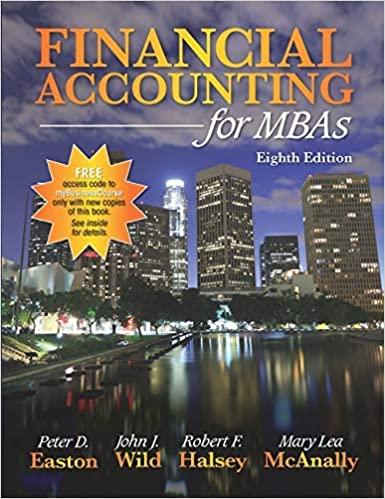


LOG EXERCISE 2.11 Statement of Cash Flows During the month of October 2011, Miller Company had the following transactions: 1. Revenues of $10,000 were earned and received in cash. 2. Bank loans of $2,000 were paid off. 3. Equipment of $2,500 was purchased for cash. 4. Expenses of $7,200 were paid. 5. Additional shares of capital stock were sold for $6,000 cash. Assuming that the cash balance at the beginning of the month was $7,450, prepare a statement of cash flows that displays operating, investing, and financing activities and that reconciles the begin- ning and ending cash balances. LO1 EXERCISE 3.1 Accounting Terminology through L010 Listed below are eight technical accounting terms introduced in this chapter: Realization principle Credit Time period principle Accounting period Matching principle Expenses Net income Accounting cycle Each of the following statements may or may not) describe one of these technical terms. For each statement, indicate the term described, or answer None if the statement does not correctly describe any of the terms. a. The span of time covered by an income statement. b. The sequence of accounting procedures used to record, classify, and summarize accounting information. The traditional accounting practice of resolving uncertainty by choosing the solution that leads to the lowest amount of income being recognized. d. An increase in owners' equity resulting from profitable operations. The underlying accounting principle that determines when revenue should be recorded in the accounting records. f. The type of entry used to decrease an asset or increase a liability or owners' equity account. The underlying accounting principle of offsetting revenue earned during an accounting period with the expenses incurred in generating that revenue. h. The costs of the goods and services used up in the process of generating revenue. c. e. g. LO2 EXERCISE 3.7 Effects of through Transactions on the LOG Accounting Equation A number of transactions of Claypool Construction are described below in terms of accounts debited and credited: 1. Debit Wages Expense; credit Wages Payable. 2. Debit Accounts Receivable; credit Construction Revenue. 3. Debit Dividends, credit Cash. 4. Debit Office Supplies; credit Accounts Payable. 5. Debit Repairs Expense; credit Cash. 6. Debit Cash; credit Accounts Receivable. 7. Debit Tools and Equipment; credit Cash and Notes Payable. 8. Debit Accounts Payable; credit Cash. Indicate the effects of each transaction upon the elements of the income statement and the bal- ance sheet. Use the code letters I for increase, D for decrease, and NE for no effect. Organize your answer in tabular form using the column headings shown below. The answer for transac- tion 1 is provided as an example. a. Income Statement Balance Sheet Transaction 1 Revenue NE Expenses = Net Income D Assets = Liabilities + Owners' Equity NE D









